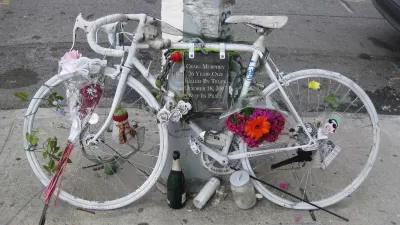If you build integrated walking and bicycling networks into a community’s transportation system, will people use it? That’s what Congress wanted to know nearly a decade ago when it established the Nonmotorized Transportation Pilot Program.
Through the Nonmotorized Transportation Pilot Program (NTPP), the Federal Highway Administration (FHWA) provided over $25 million each to four pilot communities to construct pedestrian and bicycle infrastructure projects and programs. The FHWA recently released the results of eight years of study on four pilot projects, building on an earlier report released in 2012.
The four NTPP pilot communities—Columbia, Missouri; Marin County, California; Minneapolis area, Minnesota; and Sheboygan County, Wisconsin—represent a cross-section of American cities. They are geographically, demographically, and climatically diverse, and range from a college town (Columbia) to a large, metropolitan city (Minneapolis). With assistance from the Volpe National Transportation Systems Center, FHWA, the pilot communities, the Rails-to-Trails Conservancy, and the Centers for Disease Control and Prevention formed a working group to oversee an eight-year evaluation of NTPP. Each pilot program resulted in permanent transportation additions in the four communities, and the results are striking.
These pilots show that integrated, active transportation systems are successful and beneficial when they are conscientiously designed and implemented. According to estimates, over the course of the program, the communities:
- Experienced a 22.8 percent increase in walking trips and 48.3 percent increase in bicycling trips
- Avoided 85.1 million vehicle miles traveled, saving an estimated 3.6 million gallons of gasoline and avoiding approximately 34,629 tons of CO2 emissions.
- Expanded 1/4-mile access to the bicycle network for approximately 240,000 people, 106,000 housing units, and 102,000 jobs.
- Observed a 20 percent decline in the number of pedestrian fatalities and a 28.6 percent decline in the number of bicycle fatalities despite increases in walking and bicycling.
- Experienced improved public health according to the Centers for Disease Control and Prevention, including a reduced economic cost of mortality (death) of $46.3 million from bicycling in 2013.
FULL STORY: NTPP: Continued Progress in Developing Walking and Bicycling Networks

Maui's Vacation Rental Debate Turns Ugly
Verbal attacks, misinformation campaigns and fistfights plague a high-stakes debate to convert thousands of vacation rentals into long-term housing.

Planetizen Federal Action Tracker
A weekly monitor of how Trump’s orders and actions are impacting planners and planning in America.

San Francisco Suspends Traffic Calming Amidst Record Deaths
Citing “a challenging fiscal landscape,” the city will cease the program on the heels of 42 traffic deaths, including 24 pedestrians.

Defunct Pittsburgh Power Plant to Become Residential Tower
A decommissioned steam heat plant will be redeveloped into almost 100 affordable housing units.

Trump Prompts Restructuring of Transportation Research Board in “Unprecedented Overreach”
The TRB has eliminated more than half of its committees including those focused on climate, equity, and cities.

Amtrak Rolls Out New Orleans to Alabama “Mardi Gras” Train
The new service will operate morning and evening departures between Mobile and New Orleans.
Urban Design for Planners 1: Software Tools
This six-course series explores essential urban design concepts using open source software and equips planners with the tools they need to participate fully in the urban design process.
Planning for Universal Design
Learn the tools for implementing Universal Design in planning regulations.
Heyer Gruel & Associates PA
JM Goldson LLC
Custer County Colorado
City of Camden Redevelopment Agency
City of Astoria
Transportation Research & Education Center (TREC) at Portland State University
Jefferson Parish Government
Camden Redevelopment Agency
City of Claremont



























